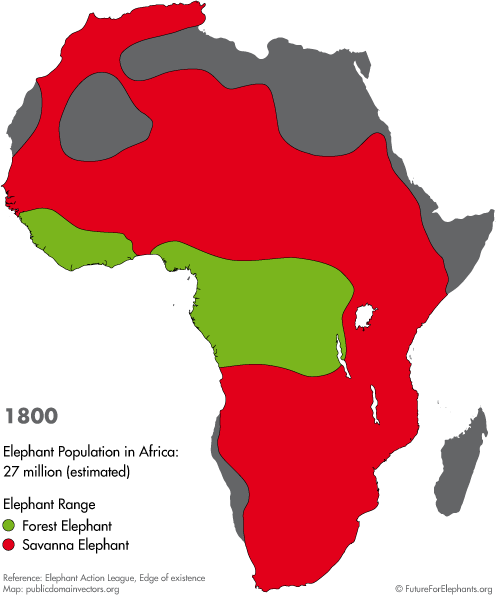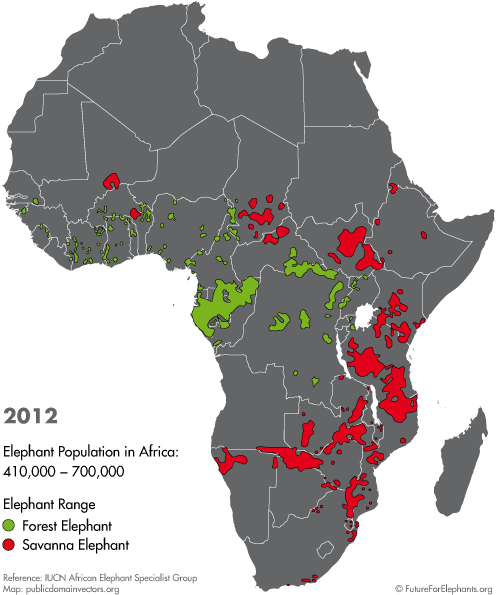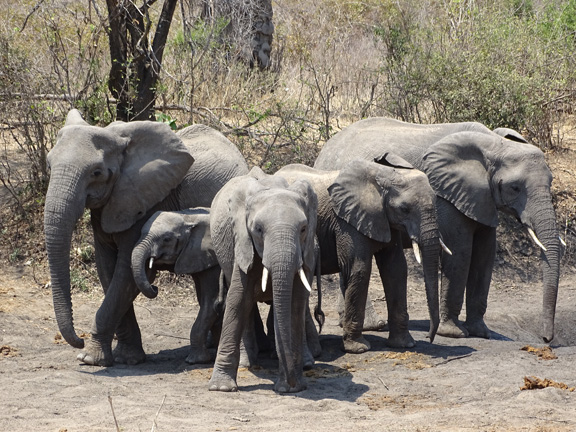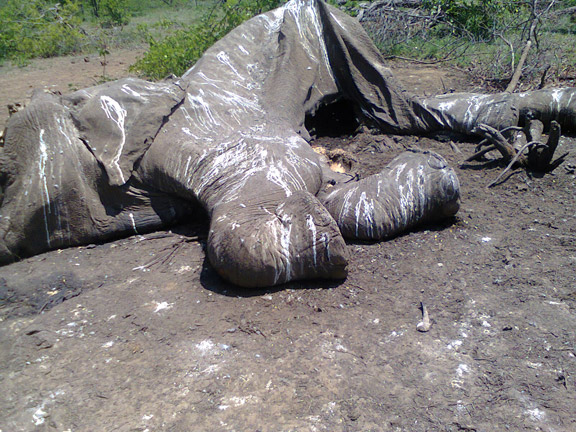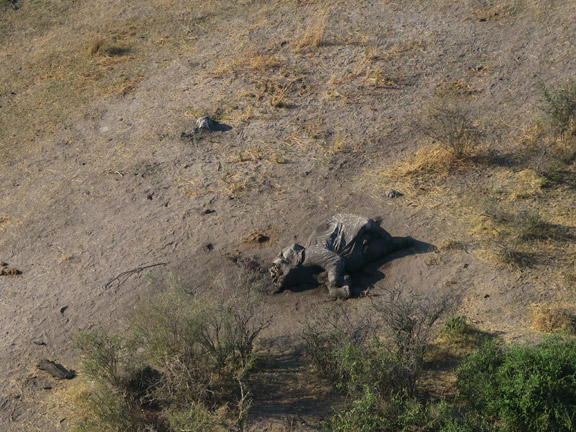Poaching has escalated into alarming dimensions in Africa. On a daily basis up to 100 elephants are being killed – slaughtered by well-equipped ivory syndicates which are run in military style. The ever growing human population destroys the pachyderms’ habitats; and when it comes to climate change related food and water shortages, wild animals almost always lose out.
In 1900, approximately 10 million elephants were roaming the African savannas. In 2016 their numbers have plummeted to an all-time low of approximately 415,000 (savanna and forest elephants). And elephant populations continue to fall.
The African forest elephant population has declined by 86 percent in the past 30 years, and the rare animals have been listed as an acutely endangered species since March 2021.
The more common savanna elephant is in the second highest category and is critically endangered.
Until March 2021, the species were considered together and were listed in the third category as "endangered."
Considering that elephants are facing imminent extinction, it seems bizarre that trophy hunters may still legally shoot the most impressive individuals of the species. Germany, too, is in favour of trophy hunting and supports it financially with considerable sums.
In order to protect elephants we demand all ivory trade to be shut down for good – worldwide, and without exceptions. Another objective is a ban on trophy hunting, as well as a ban on trade in elephants captured from the wild, whilst creating perspectives for an amicable coexistence of the respective local communities and wildlife. We support local projects to reach this goal.
The maps show the distribution of the two species forest elephant and savanna elephant at the beginning of the 19th century and in 2012. A click on the right map opens an enlarged picture with the country name (then click on the X at the bottom right to close the enlargement).
The data which result in the distribution of elephant populations shown here do not include the losses caused by a wave of industrial slaughter that was unprecedented in this century and which raged in East Africa at the beginning of the second decade. Many of the elephant populations that are still shown on the map in the hunting areas in and around the Selous in Tanzania no longer exist today. A census of the gray giants in Africa carried out with great effort in 2016 resulted in a number of 415,000 ± 20,000.
Today (2021), it must be assumed that the number of elephants still alive on the African continent has fallen below 400,000. CITES and UNEP report a total of only about 350,000 elephants.
RELATED LINKS
Here are actual numbers:
www.greatelephantcensus.com/final-report/
www.iucn.org/ssc-groups/mammals/african-elephant-specialist-group
https://www.iucn.org/news/species/202103/african-elephant-species-now-endangered-and-critically-endangered-iucn-red-list
https://www.unep.org/news-and-stories/story/struggle-sustain-africas-elephant-population
Results of the Great Elephant Census in 2016:
www.iucn.org/content/african-elephant-status-report-2016-update-african-elephant-database
Support our projects:
Your support
Become active and distribute flyers on the subject:
Download Center Flyer

